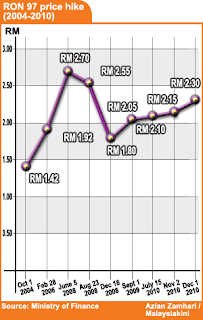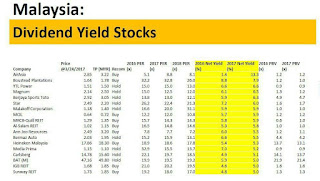The future is here. As the day goes by, more n more countries adopting cashless transaction. Some are creating the scenario to push ahead regardless of level of acceptance. Man on the street is clueless of what is happening!
This is a very good introduction on crypto currency by Palwasha Saaim which first appeared in
Profit Confidential.com. There are plenty of them, just like the paper currency, but Bitcoin is currently the front runner of the
electronic currency.
Why Bitcoin?
Satoshi Nakamoto faced a dilemma in 2016. If he wanted to transact money, he roughly had two options. First, he could buy and sell using cash, which could exchange hands without him divulging any information about himself. But cash had a downside of safekeeping. Large sums were difficult to carry around and ran the risk of getting stolen.
The other options encompassed checks and electronic transactions via credit cards, which were safer to carry but compromised personal information. Nakamoto didn’t like the government or banks surveilling his life.
Then, things got more complicated as he added foreign currency transactions to the mix. If he wanted to send money abroad, he had to wait two to four business days before the money was processed.
He wanted a solution to all this, so he created a substitute. He named it Bitcoin—an alternative currency that hit multiple birds with one stone. It was safe to keep, couldn’t be stolen, didn’t require you to divulge personal information, wasn’t controlled by a central bank, and could conduct foreign transactions spontaneously.
What Is Bitcoin?
Two words; electronic money!
Satoshi Nakamoto—the enigmatic founder of Bitcoin—wrote a computer code that generated complex mathematical equations. These mathematical equations, when solved, give the solver the rights to pass on ownership of a virtual currency—Bitcoin.
Now, Nakamoto was the first person to solve some equations and get hold of a few bitcoins. He then found enough people who believed in his idea to start transacting in bitcoins.
All these bitcoin transactions get logged onto a public ledger—the blockchain—where anyone can view and verify them (you’ll read more on this later).
Confused? We’re just warming up with bitcoin basics so stay with me and all the pieces will soon fall into place.
For now, just know that the concept of this digital currency is somewhat similar to using a credit card, where no physical money actually changes hands, but only the rights are passed on and the transactions are digitally recorded.
But then you may ask how this cryptocurrency managed to attain the status of currency when no central bank backs it. It’s simple.
Just take a look at the dollar bill in your wallet—a piece of paper. It has value only because we “believe” it is valuable, even though it’s no longer pegged to anything of intrinsic value.
Likewise, Bitcoin has attained digital currency status because enough people believe in it. You’ll be surprised to know that many companies in the U.S. now accept Bitcoin as a mode of payment. To name a few, Expedia, Dish, Newegg, and Overstock all accept Bitcoin payments. And that’s not all.
The Bitcoin price is skyrocketing this month for a reason. Big retailers around the world are jumping on the bandwagon. Two of Japan’s biggest retailers have announced this week that they’ll now be accepting bitcoins for payments.
In short; this digital currency is headed towards mass adoption.
So, Who Creates Bitcoin?
Nobody! That’s the whole idea of Bitcoin. It is decentralized—which means no central authority or individual controls it. That’s the fundamental concept in bitcoin basics that you need to wrap your head around.
Satoshi Nakamoto programmed the computer code in such a way that only a certain number of bitcoins get unlocked every two years and will do so for the next 150 years. Yes, 2140 is the cut-off year. By then, a total of 21 million bitcoins will be in circulation. That’s it! No more bitcoins after that.
You see the uncanny resemblance with gold here? We know that the supply of gold on earth is limited. It’s out there buried somewhere and we have to mine it to get hold of it. The more we dig out, the more we put in circulation, yet its total amount on the planet remains finite.
But why that specific number and date? Because, probably, by then we’ll have the final solution to all the mathematical equations underlying Nakamoto’s code.
What Is Bitcoin Mining?
To put it simply; mining means solving Nakamoto’s mathematical equations.
You know by now that only a certain sum of the 21 million bitcoins becomes available every two years. But the bitcoins are locked in computer code, so to say. To unlock them, someone has to do the complex math.
The equations put out by Nakamoto’s code are like puzzles. Nakamoto was the first one to solve some and get access to the first bitcoins. The equations are open to all computer geeks out there. Anyone can solve them to “mine” or unlock the bitcoins.
But then why don’t we sit down and solve the equations all at once? Here’s the catch. When you solve them, you in turn create some more puzzles for others to solve. And the process will go until 2140.
I’m No Computer Geek, Do I Have to Mine Bitcoins?
No, you don’t! Mining is for Bitcoin enthusiasts or for those looking to make money out of it by mining and selling their rewards. If you want to get hold of bitcoins, you can do one of the following;
Buy bitcoins on an exchange
Sell a product or service to a bitcoiner and accept a payment back in bitcoins
Ask a bitcoiner to send or lend you some bitcoins (this could be challenging, unless you have a friend)
Okay, But How Does Bitcoin Work?
It’s easy! All you need is a smartphone or a computer with Internet access and you’re set.
The first thing you need to do is download a Bitcoin wallet. That’s where you’ll be keeping all your bitcoins. You can find some of the popular e-wallet apps on the Bitcoin website: (Source: “Choose your Bitcoin wallet,” Bitcoin, last accessed April 13, 2017.)
Once you have the wallet, the next step is to get your public key or address. This is your identification. The app lets you send a request for the address. You’ll receive back a lengthy alphanumeric code. This is the address you give to other bitcoiners when sending or receiving bitcoins.
Your wallet also creates a private key. This is your password to get into your wallet and use your bitcoins. If you lose your password, you lose your coins. So this key needs to be written down and kept away in a safe place.
Now, people identify you with your public key, but the computer code verifies your transactions with your private key. And since only you and the computer code know your private key, it brings a sense of anonymity to bitcoin—exactly what Nakamoto needed to lay off surveilling agencies and data-stealing businesses.
Finally, the computer code posts all Bitcoin transactions to an openly distributed ledger that anybody can access. Remember the “blockchain” that I mentioned in the beginning? This ledger lists all transactions from the beginning of time and will do so till the end of times. The transactions can be identified with public keys of bitcoiners. This way, no individual controls the currency, and yet everyone collectively keeps a check on it.
There! We’ve covered most of bitcoin basics by now. Stay put!
Where Can I Buy Bitcoin?
If you have nobody to send or lend you your first bitcoins, you can go buy them. Where? On a Bitcoin exchange. That’s where bitcoins are traded for real currency.
You can create an account on a Bitcoin exchange and link it up with your bank. Once the bitcoins you’ve bought get deposited into your account with the exchange, you can then transfer them to your bitcoin wallet.
The price of a bitcoin is set by market forces of demand and supply, and is currently hovering over $1200 for one bitcoin. The unit of bitcoin is expressed as BTC.
Now, one bitcoin or BTC can be divided into 100 million small units and the smallest unit (1/100,000,000) is called satoshi. So you can transact for any amount in bitcoins for as little as one satoshi.
Is Bitcoin a Legal Currency?
Yes, absolutely! At least in the U.S. and most of the other countries, it is.
In fact, Bangladesh, Bolivia, and Ecuador are the only countries in the world where Bitcoin is outrightly banned All other countries are either mum on its use or have explicitly allowed it.
Countries like the U.S., the U.K., Japan, Germany, Canada, Finland, and Estonia officially accept it as a legal currency, regulate it, and some even tax its use, just like ordinary fiat currency.
Should I Invest in Bitcoin?
So I believe Adam finally understands the bitcoin basics and so do you. Now comes the final question; should one invest in this digital currency?
It depends on your risk appetite.
If you look at its penetration into the mainstream, you can easily tell that the currency is still in its infancy. But if you look at its adoption rate, the growth is vivid.
From a market valuation of a few cents to a billion dollars in just three years—that kind of growth is unprecedented in history. Neither Apple Inc (NASDAQ:AAPL), nor Alphabet Inc (NASDAQ:GOOGL), nor Amazon.com, Inc. (NASDAQ:AMZN) have matched up to that growth.
But here’s a final word of caution. Bitcoin is currently trading close to its all-time highs. At such giddying heights, I like to take a step back from any investment. So weigh all the options before taking a leap of faith on a whim.
















